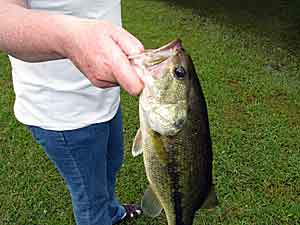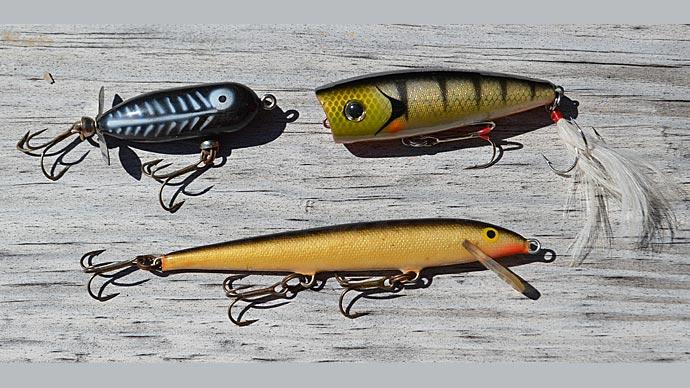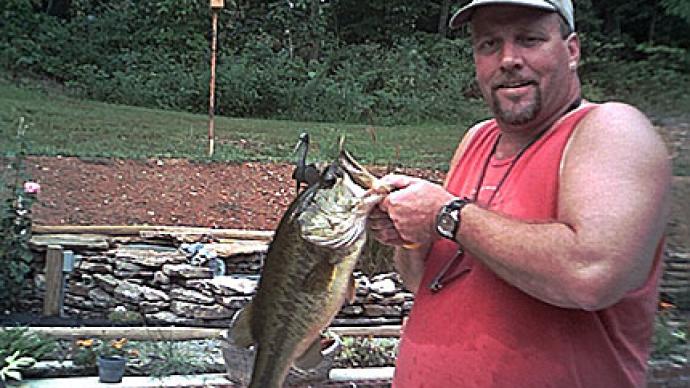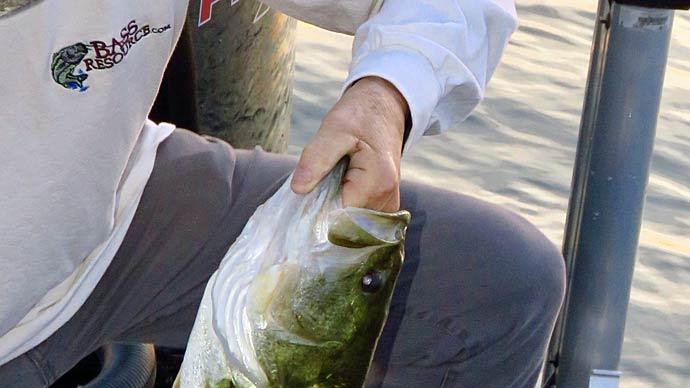
Since I began fishing professional tournaments in 1996, topwater baits have held down a starting spot in my fishing arsenal to catch big fish. From late March through November, I have the confidence to throw topwater baits under various conditions. This confidence didn't happen overnight. It came after years of trial and error.
There is no universal topwater bait I like to throw, but each situation might call for a different bait and a different approach or presentation.
In late March, the spawn is in full swing on many lakes, and the large females are around the spawning areas. A SPRO Bronzeye frog is my bait of choice during this time. Of course, frogs are great topwater baits throughout the summer as well, but few anglers realize how effective they can be for prespawn, spawn, and postspawn fish.
Bass will spawn in from 1 to 4 feet of water, and I'll bring a frog right over the top of them. And for some reason, a slow presentation above nests will bring the larger females up, and they will inhale the bait.
Specifically, on Clear Lake and the Delta, certain baits attract the larger females - frogs do that job quite nicely.
I throw frogs on an 8-foot St. Croix heavy-action Flipping Stick and 65-pound-test Power Pro braided line. Because I'm fishing mats of grass, I need a lot of line strength, but I also want to be able to make a very long cast.
My secret to fishing frogs is to vary the retrieve from fast to a complete dead-stick presentation. In a WON bass pro/am, for example, we were fishing Big Break, and I hooked a good fish on a frog. My partner immediately dropped his rod to help me with the net and left his frog in a 10-foot opening in the mat. After about 30 seconds, we heard a "bloop," and his frog had disappeared. A 6-pounder had eaten his bait while lying still in the water.
Another topwater bait I enjoy throwing from April on is a buzzbait. At the recent Invitational on the Delta, a silver, double-bladed black or white buzzbait produced well for me. If there is a little riffle on the water and I can fish the edges of mats and reeds, I know a buzzbait will get me a better-than-average fish.
The type of fish you pursue with a buzzbait in the springtime can vary depending on where you throw the bait. You'll be fishing for a different fish. For example, you're casting to the current side of a point or the eddy side. One area might produce an aggressive prespawn fish, while the other might catch the just-spawned females. I still like to throw a buzzbait on 65-pound-test braided line on the Delta or at Clear Lake. But, on reservoir lakes, I would throw 12-pound P-line.
The next type of bait I'll utilize is a popper. Lucky Craft poppers are my favorites because I can cast them a long way. From late May through November, I'll throw poppers to imitate baitfish and use them in more of a clear-water situation on reservoir lakes. Poppers get fish in the boat, not necessarily the big fish, but they are consistent through the summer, at least first thing in the morning.
When fall comes, poppers can be fished all day long. I fish a St.Croix medium-action 7-foot 3-inch rod and 10-pound P-line.
I've saved my favorite topwater bait for last. From May through November, I love throwing a Zara Spook or Sammy. For me, these are versatile baits, and more than anything else, they're big-bass baits. I throw a spook on 15 and even 20- pound P-line. The reason: I know I'm going to catch a big fish, and generally, there is some pretty nasty cover between the fish and me - docks, wood, and reeds.
Remember, when you're fishing spooks, the more erratic the retrieve, the better. That's what the fish want.
An Legend Tournament Casting Rod by St. Croix is my rod of choice, and the color of all my baits depends on the forage in the water I fish.
Topwater presentations should be part of your day if used in an overall strategy for catching quality fish all day long. I throw topwater baits 20 percent of the time during tournaments and even more than that when I'm fishing for fun. There is something about fishing a bait that can lure a fish from as deep as 40 feet to take my bait.
Learn when certain topwater baits work and which bait is right for your particular circumstance, and you will expand your use of these exciting lures.
Reprinted with permission from Bass West Magazine
BassResource may receive a portion of revenues if you make a purchase using a link above.




